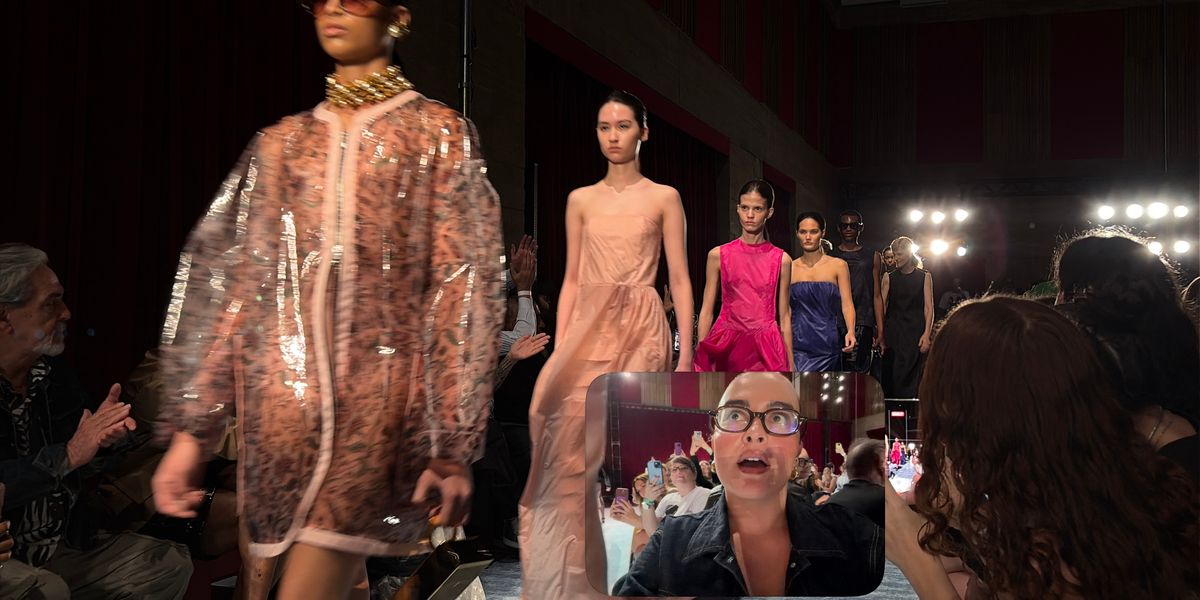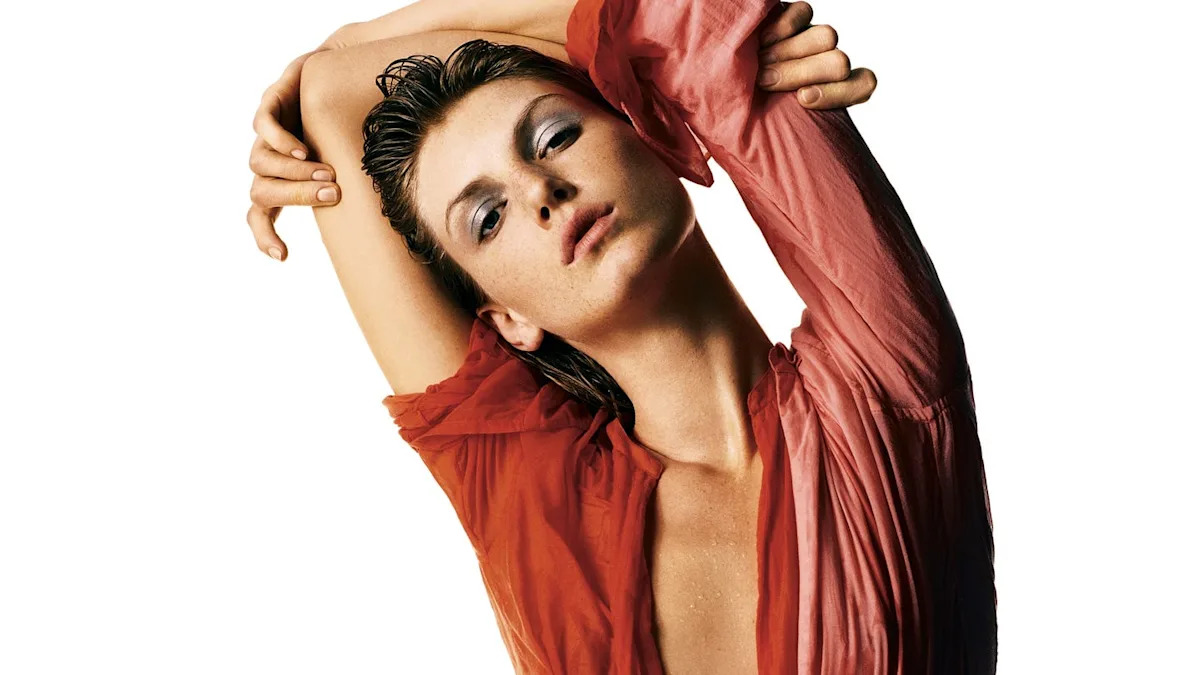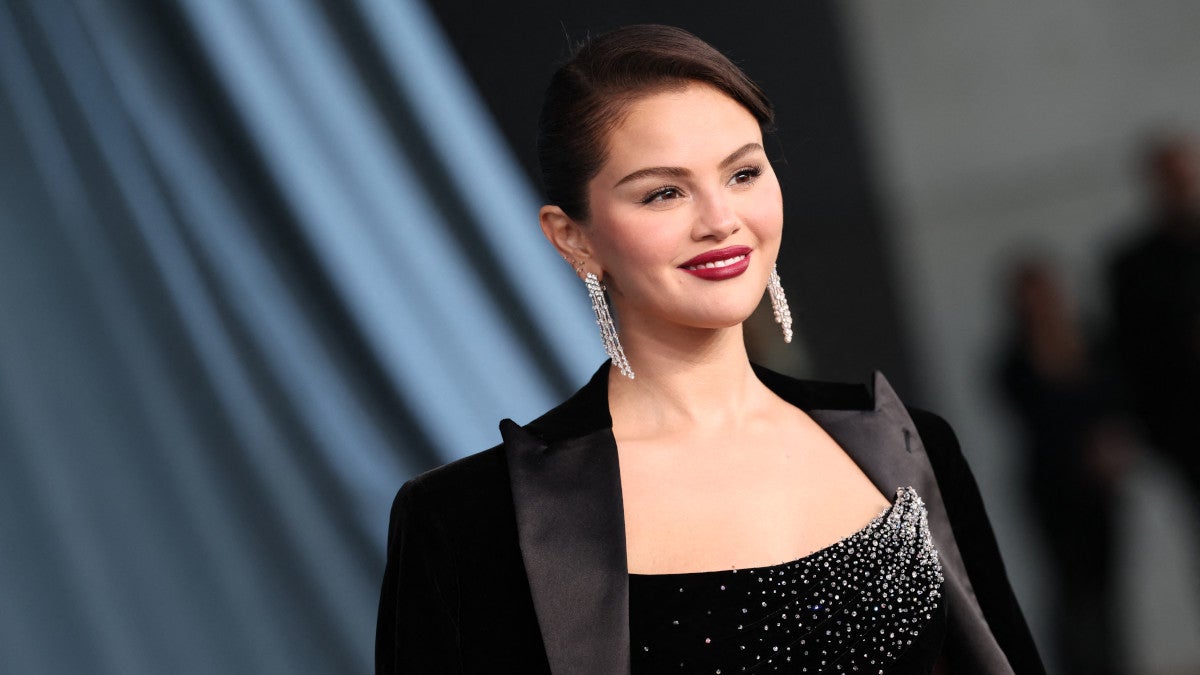Considering Brazil’s immense influence across music and media—not to mention supplying the world with the greatest supermodels of all time—it’s no shock that Brazil’s São Paulo Fashion Week would be one for the books. This season alone was a huge milestone for fashion in Latin America with SPFW not only being the biggest fashion event, but also a celebration of three decades of editions. There was a celebratory feel in every runway, from inspiring messages to showcasing the Brasilidade that everyone loves so well and so creatively.
Ahead, we spotlight the five Brazilian designers that left their mark on the fashion week that needs more international attention.
Designer #1: Dendezeiro
dendezeiro-show
Raissa Awonusi
Dendezeiro is a streetwear brand that is based in Salvador, Bahia. Their pieces are known for their intentional tailoring style and provocative social and political commentary. This season, Dendezeiro’s designers Hisan Silva and Pedro Betalha brought funk to the forefront with tailored streetwear pieces in muted tones and oversized outerwear we won’t be able to stop thinking about all season long. The collection specifically spoke to Brazil’s 1941 Vagrancy Law, which criminalized Black and low-income communities. Dendenzeiro transformed what was once systemic exclusion and oppression into a celebration of resistance and statement of survival.
The show kicked off with model Samile Bermannelli in a stunning brown long coat with exaggerated shoulders and matching mini shorts. Bermannelli walked the runway to a live DJ set instead of the usual soundtrack, with remixes of classic throwback funk songs. The collection was styled by the brilliant Suyane Ynaya with footwear by Jordan Brand, which debuted a new global sneaker during the show, and Kenner, which featured a custom version of their Megah Puffer slides with “Brasil do Brasil” stamped on them. The show closed out with two of Brazil’s favorites, MC Carol and MC Cabelinho with Karol Conká, front and center, cheering them on. The casting felt intentional and rhythmic, and we left feeling excited to continue experiencing Brazilian fashion.
Designer #2: Herchcovitch Alexandre
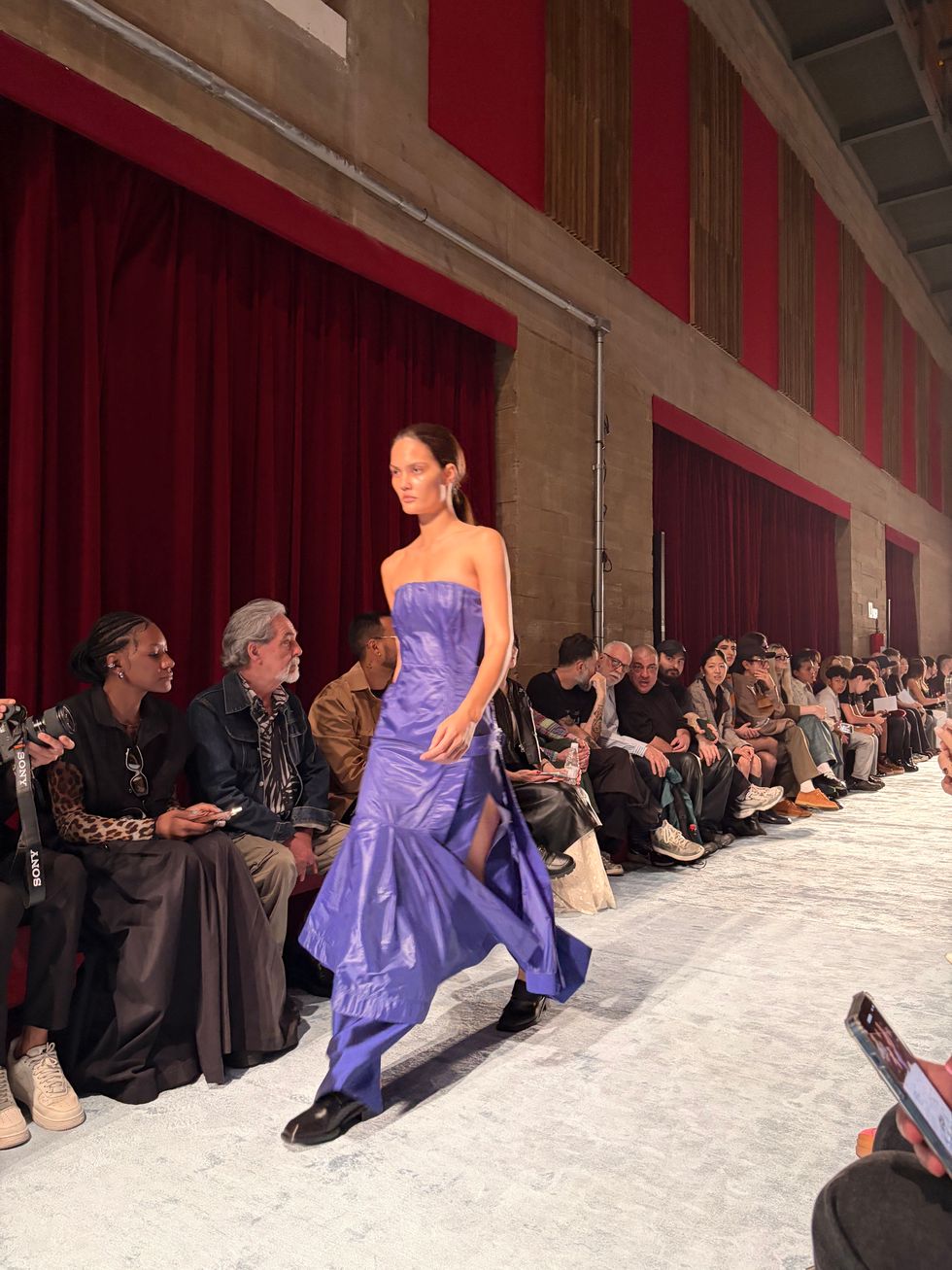
Raissa Awonusi
The veteran Brazilian brand Herchcovitch Alexandre has been at the forefront of Brazilian fashion since the 1990s, consistently bringing avant-garde style with architectural cuts and shapes. This season was no exception. Alexandre brought another flawless collection with simple and fluid silhouettes that felt sophisticated and geometric.
The show was one of the few that took place outside of the set location and guests were greeted with a freshly brewed cup of The Coffee upon arrival—perfect for a rainy Brazilian morning. The models walked briskly in opposite ends of the runway towards each other to a remix of “Sweet Dreams” by Eurythmics, wearing both sleek evening-wear and more casual pieces. The clothes felt brilliantly architectural in ivory, black and pops of color, with their fair share of floral designs and metallic and gingham patterns. A fun detail: Apple products, like the new iPhone and headphones, were the lead accessory on the runway.
The collection proved once again why Herchcovitch Alexandre remain the chicest in Brazil.
Designer #3: Atelie Mão de Mãe
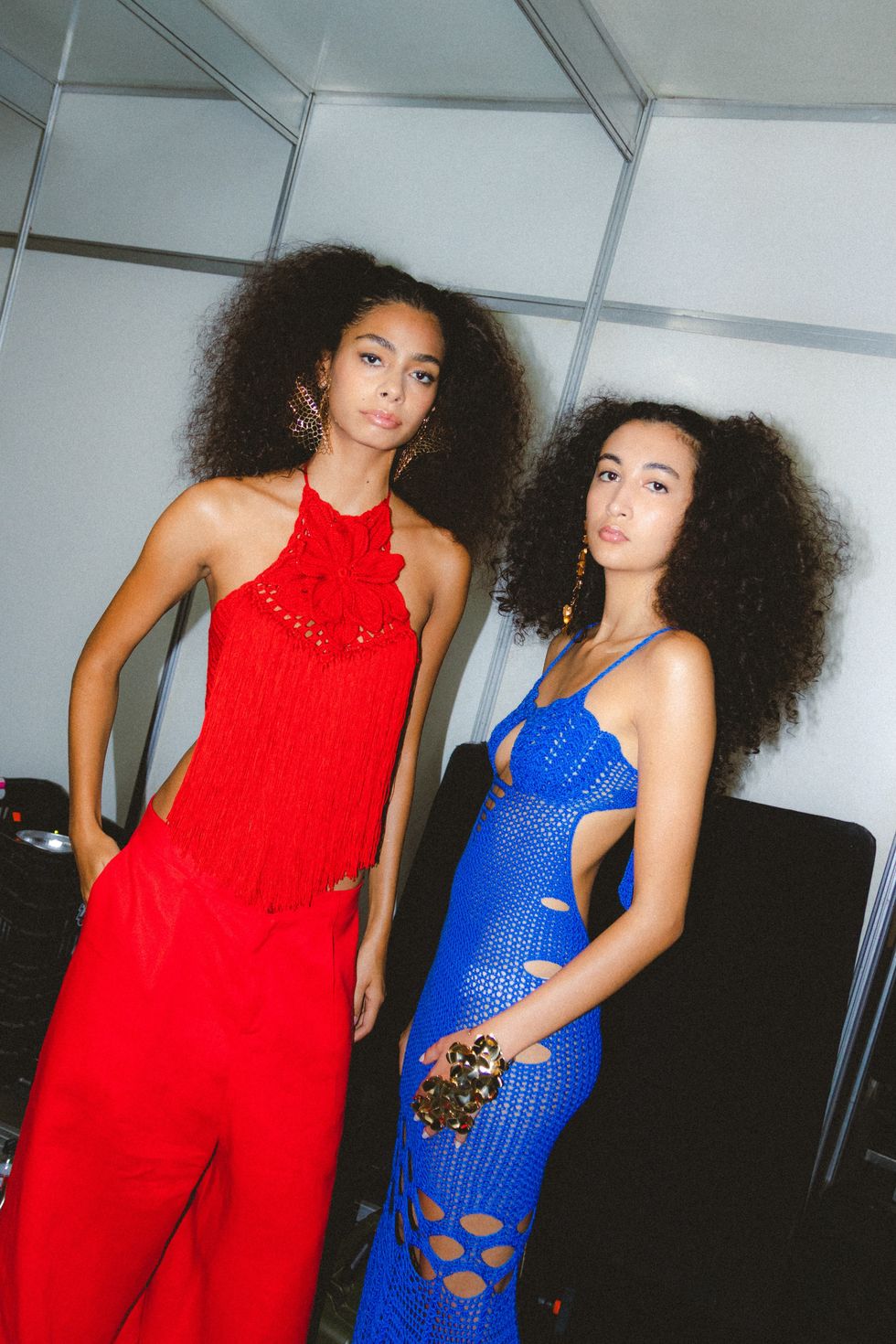
Courtesy of Atelie Mão De Mae
It’s impossible to not think of Atelie Mão De Mae when you think of Brazilian fashion. The brand, also from Salvador, Bahia, never fails to capture the Brazilian spirit with its artisanal and crochet pieces that spin the simple and handmade into high fashion. This season, the brand expanded with tailored linen pieces and, once again, set a standard on the runway not only body diversity, but also by featuring mainly Black and Indigenous models.
For this collection, designers Patrick Fortuna and Vinícius Santana drew inspiration from the Tropicalia movement of the 1960s, which took place during Brazil’s dictatorship that censored Brazil’s artists. The movement was led by MPB legends Gal Costa, Gilberto Girl and Maria Bethania. The reference was made clear through the use of stunning red pieces on the runway, a full MPB soundtrack—kicking off with “Divino Maravilhoso” by Gal Costa— and the “Gal Costa glam,” aka voluminous hair and subtle sculpting with bright red lips.
The collection was a tear-worthy showcase of the importance of music and fashion, and the relief, joy, and reflection felt after Brazil’s dictatorship in the 60s ended; it also felt in tune with our current political state globally, proving that art can truly heal us and bring culture forward.
Designer #4: Normando
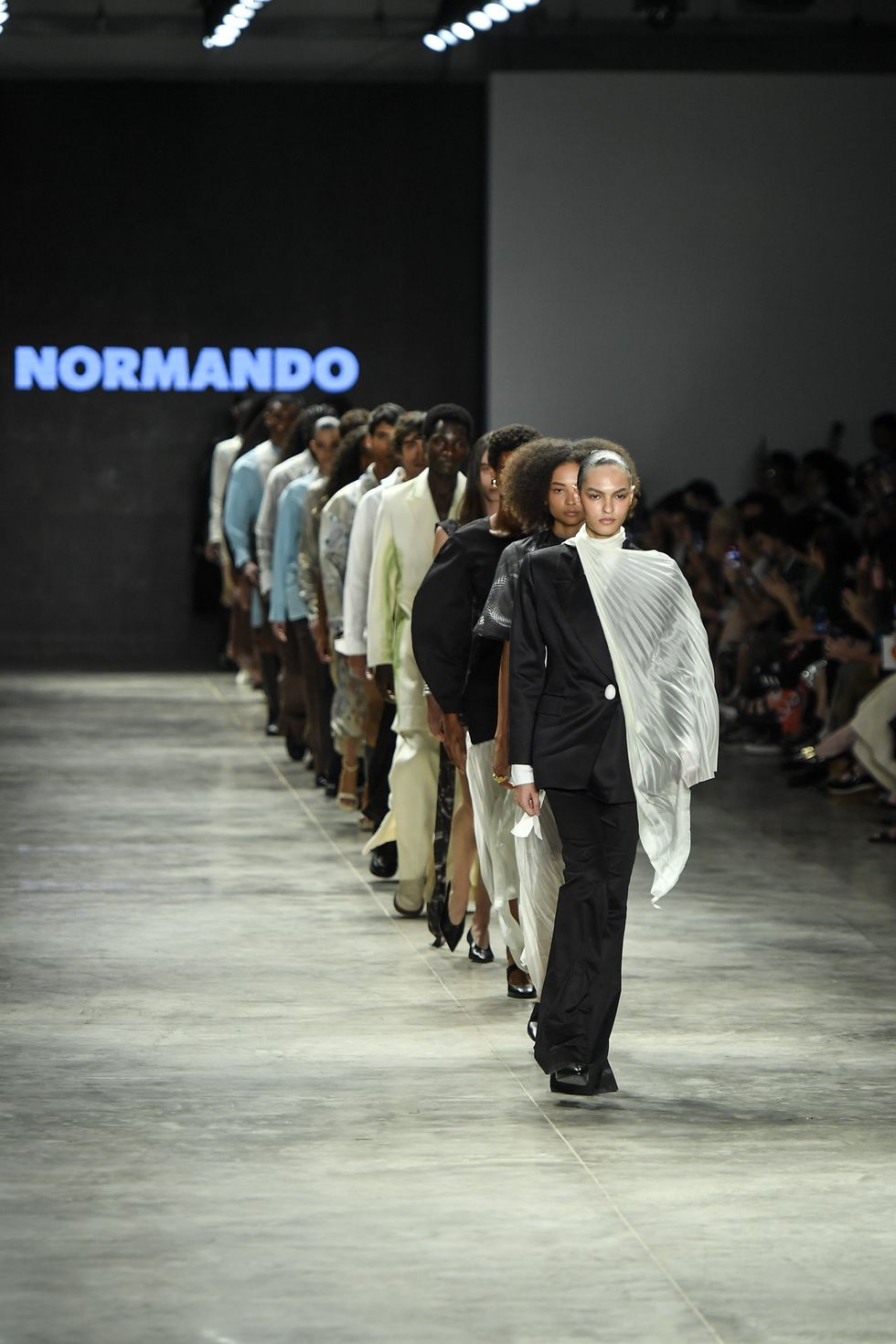
Courtesy of Normando
Amazon0born brand Normando is known for its sustainability efforts and flawless designs. Designed by Marco Normando and Emidio Contente, this season the brand brought biotechnology and mythology to the forefront with each of their pieces, utilizing natural pigments and local fibers to make wearers feel like they are truly in a living forest—a really elegant one at that.
Throughout the show, the theme of “Myth or Legend? was shown through sculptural garments made from malva, buttons carved from jarina seeds, and digital prints with animal textures. The brand took their fabrics to another level and even partnered with AIPER Lab to use microorganisms from the Amazonian river to produce a range of natural pigments in living colors, like gold and amber, while also eliminating chemical waste.
If their sustainability efforts alone didn’t convince you of the brand’s excellence, then the designs will. On the runway, the standout pieces were both unique and eerie, with one amber-hued dress being ornamented by glass-encased bugs, modeled by beautiful Emily Nunes. The brand also featured blazers that cocooned over models’ heads and shoulders. Each piece impeccably emphasizes the theme of nature and fantasy, while keeping their ethos of sustainability at the forefront.
Designer #5: LED
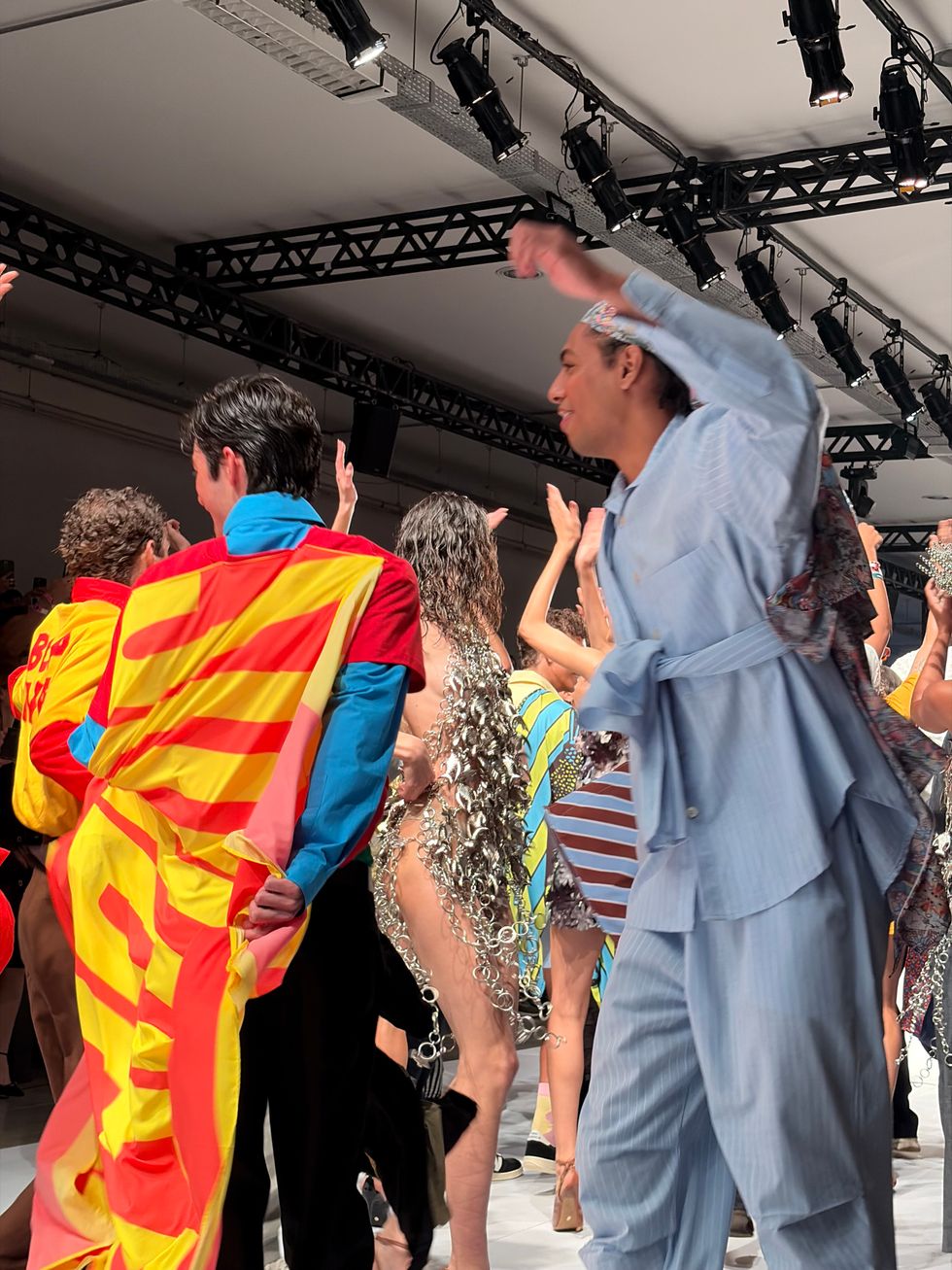
Raissa Awonusi
The streetwear brand LED brought Carnaval to October this season. Founder Celio Dias and Creative Director Cleu Oliver drew inspiration from Brazil’s infamous Carnaval. Specifically, they were inspired by the barracoes where “gambiarra”, aka Brazilian DIY culture, takes place with its decorations, costumes and festival floats. This is where Carnaval begins, when communities and schools come together to celebrate craftsmanship and creativity that brings the country together.
For LED, that meant combining denim, crochet and natural fabrics, like hemp and linen, with vibrant colors, as well as iconic slogans across shirts, coats, bags and scarves. The brand collabbed with Aloe, a jewelry brand from Minas Gerais for their artisanal jewelry; designer Sofia Penido created stunning metallic-beaded collars, headdresses and Arlequim-inspired pieces that got everyone’s attention.
Off the runway, all the crew and SPFW team wore t-shirts with the phrase “Don’t let national fashion die.” On the runway, models walked down a white carpeted runway with a statue of Brazilian artist Heitor dos Prazeres, a pioneer in the samba and carnival space, in the middle of the room. As part of the cast, dancer and model Jamily Marques closed out the show with a percussion ensemble behind her made up of top musicians in São Paulo; she was then joined by the entire cast and crew, and later invited the entire audience to join in celebration and close out the Barrãcao collection perfectly.
This show felt like it should’ve been the closer of São Paulo Fashion Week. It seamlessly brought Brazilian culture to the forefront with new designs that nod to moments in our history, while staying true to their design language.
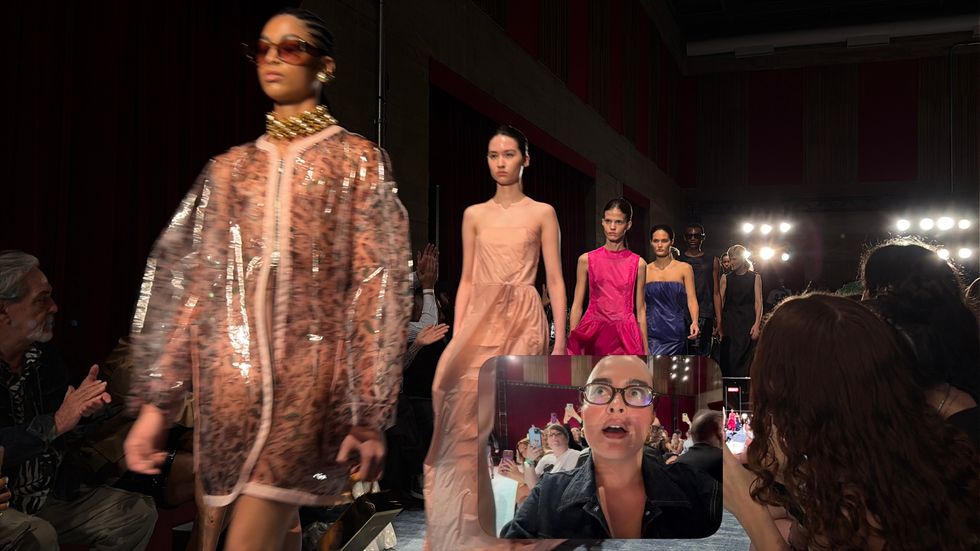
Raissa Awonusi
São Paulo Fashion Week’s 30th anniversary was celebratory from start to finish. Every runway commemorated Brazilian culture, history, and the future of Brazilian fashion—becoming the perfect starting point to your new Brazilian fashion obsessions and refusing to let national fashion die.
